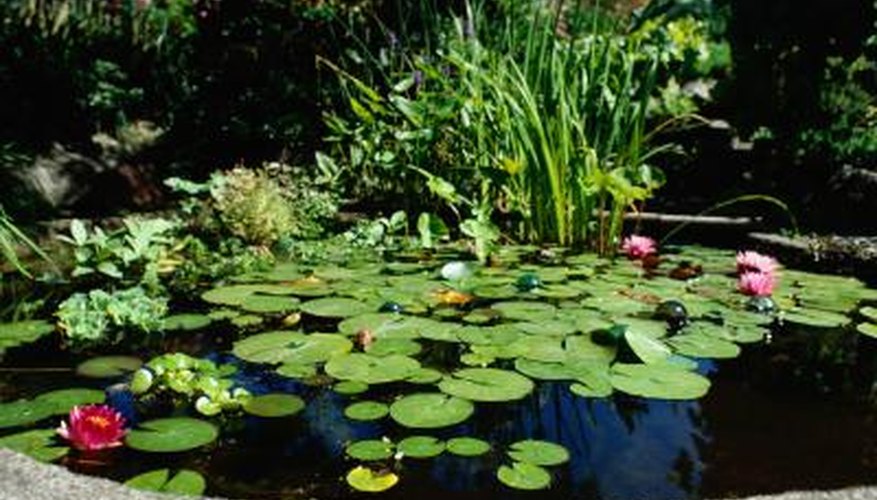A pond will bring an extra dimension to your garden and provide a haven for all manner of water insects and creatures. If your plot is on a slope you will have the added opportunity to include natural looking waterfalls and hear the sound of running water when you relax in your outside space.
Mark out where you want the pond. A sloped plot is ideal for cascading ponds and will look more natural. Allow for a meander - don't just have the ponds one directly below the other. There must be an overhang at the lowest point so that the water can flow down through the pond system. Start from the top of the slope and dig out the first pond. This should be at least 2 feet deep in the centre but remain shallow at the front edge. This will be the smaller pond. Batten up the back of the pond with wooden stakes to ensure the soil does not fall back into the hole.
- A pond will bring an extra dimension to your garden and provide a haven for all manner of water insects and creatures.
- There must be an overhang at the lowest point so that the water can flow down through the pond system.
Dig out the second pond a foot or so below the first. This pond will need to be the same size or bigger in order to look natural. If your plot has a very steep incline you can make this pond deeper so that it can home fish. Again keep a shallow edge at the front of the pond. Batten up the back of the second pond.
Dig the main pond below the second one, allowing for a natural looking meander. This pond needs to be a least 3 to 4 feet deep in the middle. Shape the interior of the pond so that it shelves toward the lower end of the slope. This will allow small creatures to climb out of the pond if the fall in. Batten the back of the pond.
- Dig out the second pond a foot or so below the first.
- Dig the main pond below the second one, allowing for a natural looking meander.
Line each pond with old blankets. This will prevent sharp stones tearing the pond liner.
Set up the pump according to the manufacturers instructions and run in the electrics to a safe point. If you bury the wiring make sure it is encased in thick tubing to prevent accidents if you are digging and forget where it is buried.
Line the ponds with pond liner and cement the edging stones into place to cover the edges and hold the liner firmly in place. On the upper ponds leave a lip for the water to flow downward into the pond beneath. Leave the cement to set.
- Line each pond with old blankets.
- Line the ponds with pond liner and cement the edging stones into place to cover the edges and hold the liner firmly in place.
Arrange the pebbles in the shelved area of the main pond and at the edges of the upper ponds. Add pond plants to help make your pond look natural. Weigh the plant pots down with pebbles so that they stay on the shallow edges.
- Arrange the pebbles in the shelved area of the main pond and at the edges of the upper ponds.
- Weigh the plant pots down with pebbles so that they stay on the shallow edges.
Fill the ponds with water and activate the pump. The water should flow gently between the ponds. If any water is escaping, or the flow is too fast, adjust the pump settings or build up the bank of the pond where the flow is being lost.
Leave the pond to settle for a week before adding fish.
TIP
Put plants at the edges of the bank, or add large rocks to make the pond appear more natural.
WARNING
Make sure young children are supervised when playing near a pond.
